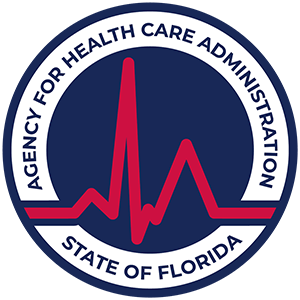The Stages Of Alcoholism
Discover the stages of alcoholism, treatment options, and how support groups aid recovery in our in-depth guide.
Understanding Alcohol Use Disorder
To fully comprehend the stages of alcoholism, it's crucial to first understand Alcohol Use Disorder (AUD), a medical condition that has severe implications on an individual's life.
Definition and Impact
Alcohol Use Disorder (AUD) is a medical condition diagnosed when a patient's drinking causes distress or harm. The disorder can range from mild to severe, with signs and symptoms that include periods of being drunk (alcohol intoxication) and symptoms of withdrawal. Excessive drinking can impair judgment skills, lower inhibitions, leading to poor decision-making and dangerous situations or behaviors.
AUD can be mild, moderate, or severe, depending on the number of symptoms a patient has experienced in the previous 12 months. As AUD progresses in severity, alcohol-induced changes in the brain can make it very difficult to cut down or quit. However, with prolonged abstinence, some AUD-induced brain function changes may improve and even reverse.

Prevalence and Effects
The prevalence of AUD is alarming. More than 14 million adults ages 18 and older have AUD, and 1 in 10 children live in a home with a parent who has a drinking problem [3]. According to a 2022 national survey, about 1 in 7 men, 1 in 11 women, and 1 in 33 adolescents (aged 12-17) meet the diagnostic criteria for AUD.
Alcohol use may start in the teens, but AUD is more common in the 20s and 30s, though it can manifest at any age. Risk factors include genetic, psychological, social, and environmental influences [1].
The impact of AUD is far-reaching. Alcohol depresses the central nervous system, affecting speech, muscle coordination, and vital brain centers, potentially leading to a life-threatening coma or death during heavy drinking binges [1].
In 2020, the SAMHSA Helpline received 833,598 calls, representing a 27 percent increase from the previous year when a total of 656,953 calls were received [4].
Understanding AUD and its prevalence forms the basis for appreciating the stages of alcoholism. It's important to note that early detection and treatment can significantly improve the chances of recovery.
Diagnosis and Treatment Options
Understanding the stages of alcoholism is crucial, but it is equally important to understand the medical diagnosis criteria and available treatment methods for Alcohol Use Disorder (AUD).
Medical Diagnosis Criteria
Alcohol use disorder (AUD) is a medical condition that doctors diagnose when a patient’s drinking causes distress or harm. The severity of this condition can range from mild to severe. Doctors determine the diagnosis by asking patients a series of questions. If a patient responds “yes” to two or more of the following questions, they may be diagnosed with AUD.
- Have you had times when you ended up drinking more, or longer, than you intended?
- Do you spend a lot of time drinking or dealing with hangovers?
- Do you want a drink so badly that you can't think of anything else?
- Have you found that drinking or the aftermath interferes with taking care of your home or family?
- Have you continued to drink even though it was causing trouble with your family or friends?
- Have you given up or cut back on activities that were important or interesting to you in order to drink?
Available Treatment Methods
There are several treatment options available for AUD, with the main goal of working to stop alcohol use to improve the quality of life.
- Brief Intervention: This involves having one or more short talks with a healthcare professional about your drinking and its effects.
- Counseling (Individual or Group): This can involve working with a therapist to identify and change behaviors that lead to heavy drinking.
- Outpatient Program: In this type of program, you visit a treatment center regularly, but you do not stay overnight.
- Residential Inpatient Stay: For serious cases of AUD, a stay at a residential treatment facility may be necessary. These programs typically involve individual and group therapy, support groups, educational lectures, family involvement, and activity therapy provided by licensed professionals specializing in treating AUD.
Oral medications like disulfiram, naltrexone, and acamprosate may be used in treating AUD. Disulfiram produces physical reactions like flushing, nausea, and vomiting if alcohol is consumed. Naltrexone blocks the good feelings alcohol causes, and acamprosate helps combat alcohol cravings [5].
Alternative medicine techniques may be used in addition to conventional medical treatment for AUD recovery. These include lifestyle and home remedies that may be helpful in changing habits and making different lifestyle choices.
Choosing the right treatment method varies from person to person and depends on the severity of AUD and personal circumstances. The most important step is to seek help and start treatment.
Medications and Therapies
When confronting the stages of alcoholism, various medications and therapies are available, offering assistance and potential recovery routes. It's crucial to understand these options to make informed decisions about treatment plans.
FDA-Approved Medications
The U.S. Food and Drug Administration (FDA) has approved three medications for treating alcohol dependence: Naltrexone, Acamprosate, and Disulfiram.
These oral medications play a significant role in the treatment of alcohol use disorder as they work to counteract the effects of alcohol and help manage cravings. It's important to note that these medications should be administered under the supervision of healthcare professionals, as they can have side effects and potential interactions with other medications.
Behavioral Therapies
In addition to medication, there are a variety of behavioral therapies available for alcohol problems. These therapies can involve brief interventions, individual or group counseling, outpatient programs, or residential inpatient stays. The primary goal of these therapies is to work to stop alcohol use and improve the individual's quality of life [5].
Some of the common types of behavioral therapies include:
- Cognitive-behavioral therapy
- Motivational enhancement therapy
- Marital and family counseling
- Residential treatment programs
Choosing the right therapy depends on the individual's specific needs, the severity of their alcohol use disorder, and their willingness to participate in the treatment. Participating in support groups is often seen as an essential part of coping with alcohol use disorder, preventing or dealing with relapses, and staying sober. Health care providers or counselors can recommend support groups that are also often listed online.
Unmasking the stages of alcoholism requires a comprehensive approach that includes both medications and behavioral therapies. These treatments can provide the necessary support and tools to help individuals navigate their journey towards recovery. It's important to remember that recovery is a process, and it's okay to ask for help.
Support Groups and Peer Assistance
In the journey to overcome alcohol addiction, the role of support groups and peer assistance is immeasurable. They provide necessary social reinforcement that bolsters an individual's commitment to recovery.
Role of Support Groups
Participation in support groups is often seen as an essential part of coping with alcohol use disorder, preventing or dealing with relapses, and maintaining sobriety. Support groups provide a platform for individuals to share experiences, gain insights, and find encouragement in a non-judgmental environment.
Research shows a correlation between participation in support groups like Alcoholics Anonymous (AA) and reduced drinking and cravings. However, the effectiveness of a peer support group may vary depending on factors such as attendance, engagement, involvement, professional treatment, addiction severity, and individual goals.
Types of Peer Support
Peer support groups for alcohol addiction, also known as mutual self-help groups or recovery support groups, provide a crucial source of encouragement and guidance for individuals facing alcohol abuse issues and wanting to develop healthier habits. These groups can be either online or in-person and are led by a group facilitator who guides participants through discussions or activities.
There are several peer support groups available for those grappling with the stages of alcoholism:
- Alcoholics Anonymous (AA): AA is the most widely available self-help group for alcoholics, with over 120,000 groups in approximately 180 countries. AA follows a 12-step approach to sobriety, which includes principles such as admitting powerlessness over alcohol, seeking a higher power, making amends, and helping others. AA meetings are regularly held in community spaces and online, and members are encouraged to engage with a sponsor for continuous support and guidance [6].
- Dual Recovery Anonymous (DRA): DRA is another 12-step program, but it caters to individuals who want to address alcohol abuse and co-occurring mental health issues. DRA meetings may be more comfortable than AA for those looking for discussions focused on mental health. However, the availability of DRA meetings is more limited compared to AA.
The choice of support groups depends on the individual's comfort level, the availability of meetings, and the specific needs they have in their recovery process. Regardless of the chosen support group, the key is regular participation and engagement, as these are correlated with successful recovery.
Stages of Alcohol Addiction
Understanding the stages of alcoholism is crucial in comprehending the complexities of this addiction. It can provide meaningful insights into the progression of the disease and help in tailoring effective intervention measures.
Three-Stage Cycle Model
Alcohol addiction, synonymous with the former diagnosis of alcohol dependence and the current diagnoses of moderate or severe Alcohol Use Disorder (AUD), can be framed as a cycle comprising three stages. These stages serve as a model for translating the brain changes associated with AUD to the clinical domain. The three functional domains undergoing dysregulation in this model include incentive salience, negative emotionality, and executive function [2].
The three stages of the addiction cycle are:
- Incentive salience: This stage is characterized by an intense desire or craving for alcohol.
- Negative emotionality: At this stage, the individual faces unpleasant feelings or physical symptoms when not consuming alcohol.
- Executive function: In this stage, the person's ability to make sound decisions and control impulses is severely compromised due to alcohol consumption.
Individuals who drink heavily can enter the addiction cycle at any of these stages. The progression through these stages is not linear, and individuals may cycle through these stages multiple times before seeking help.
Neurocircuitry Elements
The three stages of alcohol addiction are believed to be mediated by three major neurocircuitry elements: the basal ganglia, extended amygdala, and prefrontal cortex.
- Basal Ganglia: This part of the brain plays a significant role in the incentive salience stage, driving the intense desire or craving for alcohol.
- Extended Amygdala: This neurocircuitry element is linked to the negative emotionality stage, contributing to the unpleasant feelings and physical symptoms associated with alcohol withdrawal.
- Prefrontal Cortex: This brain region is implicated in the executive function stage, where decision-making abilities and impulse control are hampered due to alcohol consumption.
As AUD progresses in severity, these brain-induced changes make it challenging for individuals to reduce or quit alcohol consumption. However, with prolonged abstinence and evidence-based treatment, some of these changes may improve and even reverse over time, aiding in recovery.
Understanding the stages of alcoholism and their neurocircuitry elements is crucial in formulating effective intervention strategies and treatment plans. It also provides a comprehensive understanding of the disease's progress, helping healthcare professionals and affected individuals recognize the signs and symptoms early and take appropriate action.
Addressing Alcoholism Stages
Addressing the stages of alcoholism involves a comprehensive understanding of intervention strategies and the potential for brain changes and recovery. It's crucial to remember that each individual's journey with alcohol use disorder (AUD) is unique, and what works for one person may not work for another.
Intervention Strategies
The first step in addressing AUD is to recognize the problem. AUD can manifest as a problematic pattern of alcohol use leading to clinically significant impairment or distress. According to the DSM-5, the diagnosis of AUD requires at least 2 of 11 symptoms occurring within a 12-month period. The severity of AUD is determined by the number of symptoms: 2 to 3 for mild AUD, 4 to 5 for moderate, and 6 or more for severe. Healthcare professionals can use an Alcohol Symptom Checklist based on these criteria to diagnose AUD and determine its level of severity in patients who screen positive for heavy drinking.
Interventions may involve family, friends, or professional intervention specialists. The goal of an intervention is to help the person struggling with AUD realize their need for treatment. However, it's important to approach the intervention with empathy, understanding, and respect to ensure the individual feels supported rather than attacked.
Brain Changes and Recovery
As AUD progresses in severity, alcohol-induced changes in the brain can make it very difficult to reduce or stop alcohol consumption. These changes can be framed as a three-stage cycle that serves as a model for translating the brain changes associated with AUD to the clinical domain. This model includes dysregulation in three functional domains: incentive salience, negative emotionality, and executive function, that overlap with the three stages of the addiction cycle. The three stages are hypothesized to be mediated by three major neurocircuitry elements: the basal ganglia, extended amygdala, and prefrontal cortex, respectively.
Despite the challenges, recovery is possible. With prolonged abstinence, at least some AUD-induced brain function changes may improve and even reverse. Evidence-based treatments can help people achieve abstinence and facilitate these brain changes. The recovery process involves ongoing support, which may include therapy, medication, and support groups.
The dangers of untreated alcoholism are severe, leading to a constant internal and external struggle, often posing questions like "Will I drink again?" or "Why can't I stop drinking once I start?" [7]. Therefore, addressing the stages of alcoholism is crucial to prevent further damage and promote recovery.














.svg)








